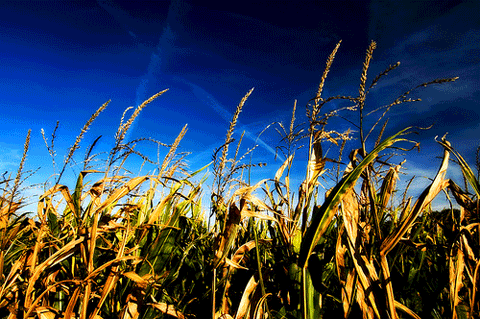
Current transport biofuels are mainly made from crops producing starch, sugar and edible oils. In doing so, they divert those crops from providing food. However, the demand for food is highly inelastic. I have never met anyone in an industrialized country who changed his diet because of transport biofuel production. So, additional crops have to be grown compensating for the diversion of starch, sugar and oil to biofuel production. Part of this additional production takes place on existing agricultural soils by increasing productivity. This is not always the case. In a recent paper published by the Proceedings of the National Academy of Sciences of the USA, it is for instance shown that worldwide the 1970-2005 expansion of two major suppliers of biofuels, sugarcane and soybeans, was characterized by decreasing productivity (1). More importantly however, when the expansion of transport biofuel production is fast, as it currently is, also land that is not under cultivation has to be used for food production. In practice, this is often wooded or forested land. When one compares the aboveground carbon stock of wooded or forested land with the carbon stock on cultivated arable soil, the difference tends to be large. So, in converting forested and wooded land to arable soils, much carbon ‘migrates’ to the atmosphere, as CO2 or CH4, adding to climate change.
The first state to squarely confront land use change is California
Currently the European Union is debating the same matter behind closed doors. Some large countries such as Italy Spain Italy Spain California
Also, it is worrying that the European Union neglects another aspect of land use, which impacts climate change due to European biofuel production: tillage. Whereas much agriculture in the Americas Europe conventional tillage is still the standard. Conventional tillage has a large impact on carbon stocks in soils. Whereas in no-till agriculture there should be no loss of soil carbon, under conventional tillage carbon loss can be large. A recent detailed study about arable land in northern Belgium Belgium Europe yearly about 840 kg of carbon is lost from a hectare of arable soil (3). This negatively affects life cycle greenhouse gas emissions associated with biofuels derived from crops grown in Europe .
It is time for the European Union to squarely confront the realities of biofuel production in Europe and to include the real impacts on climate of land use, including land use change, in its biofuel policies.
(1) T.K. Rudel et al. Agricultural intensification and changes in cultivated areas, 1970-2005. Proceedings of the National Academy of Sciences USA
(2) J. Meersmans et al. Changes in organic carbon distribution with depth in agricultural soils in northern Belgium
(3) L.M, Vleeshouwers and A. Verhagen. Carbon emission and sequestration by agricultural land use: a model study for Europe . Global Change Biology 8 (2002) 519-530

No comments:
Post a Comment